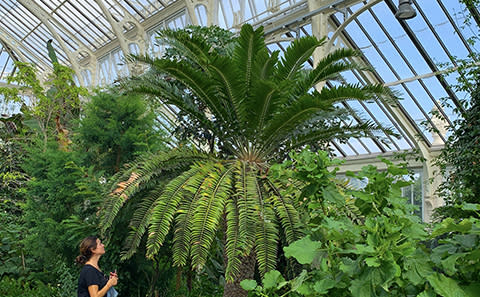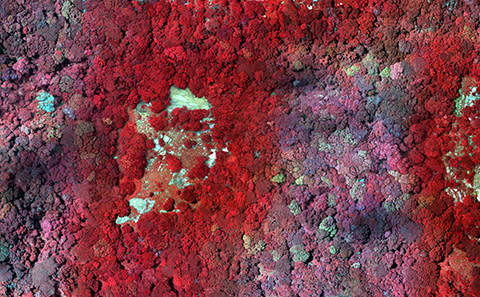If you think it’s hard for singles, consider the case of E. woodii. Scientists have discovered only one specimen of the plant species: a male that led a solitary existence in South Africa’s Ngoye Forest in 1895.
That specimen was quickly moved to a botanical garden, where botanists have managed to propagate it over the past century. But now researchers using modern tools are scouring the forest in search of a potential mate. Think of it as Tinder for, well, tinder.

“This plant is, as far as we know, extinct in the wild. I was very inspired by the story of the E. woodiiit reflects a classic story of unrequited love. I am hopeful that there is a female out there somewhere, there must have been one at some point,” said Dr. Laura Cinti, a researcher at the University of Southampton’s Winchester School of Art, in a statement.
Cinti leads a team of scientists who use drones and artificial intelligence (AI) to scour the dense 4,000-hectare Ngoye Forest for a possible mate for the plant.
“It would be amazing to bring this plant so close to extinction through natural reproduction,” she continued.
A long, lonely, lonely, lonely, lonely time
E. woodii is a cycad, the oldest seed-bearing plant still living on Earth. Cycads first appeared on the scene 300 million years ago, meaning they survived the extinction event that killed the dinosaurs, the Industrial Revolution and the 1980s, among other planetary disasters.
All cycads are rare. In fact, they are the most endangered organisms on earth and are kept in cages in botanical gardens so that thieves do not sell them on the black market. But E. woodii is rare, even by cycad standards.
And after drones captured tens of thousands of multispectral images in 2022 without yielding another specimen of the species, Cinti and her team turned to AI to help shorten the search.


“With the AI, we use an image recognition algorithm to recognize plants by shape,” she said. “We generated images of plants and placed them in different ecological environments to train the model to recognize them.”
And if that doesn’t work? The team has a plan B: change E. woodiis sex.
“There have been reports of sex change in other cycad species due to sudden changes in the environment, such as temperature, so we are hopeful that we can induce a sex change in the future. E. woodii too,” Cinti explained.
Good luck, E. woodii. We’re all rooting for you.
The post Single and ready to mingle: The world’s loneliest plant seeks a partner appeared first on Explorersweb.






